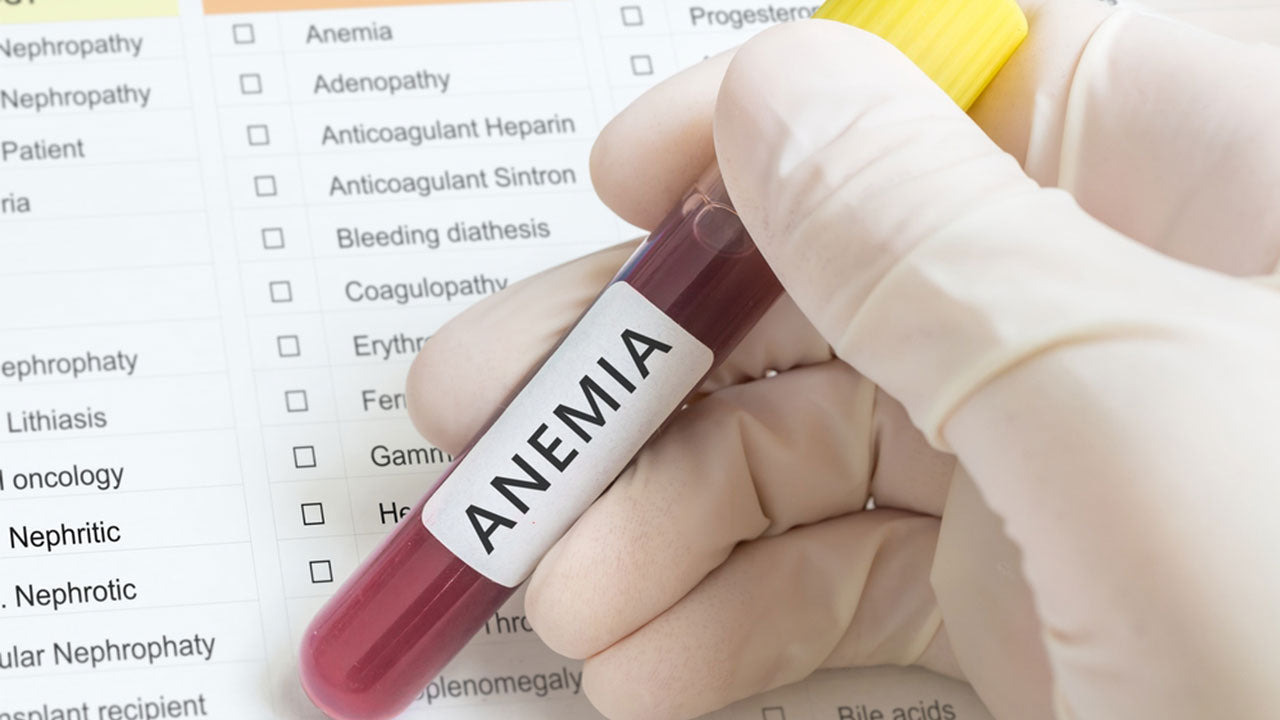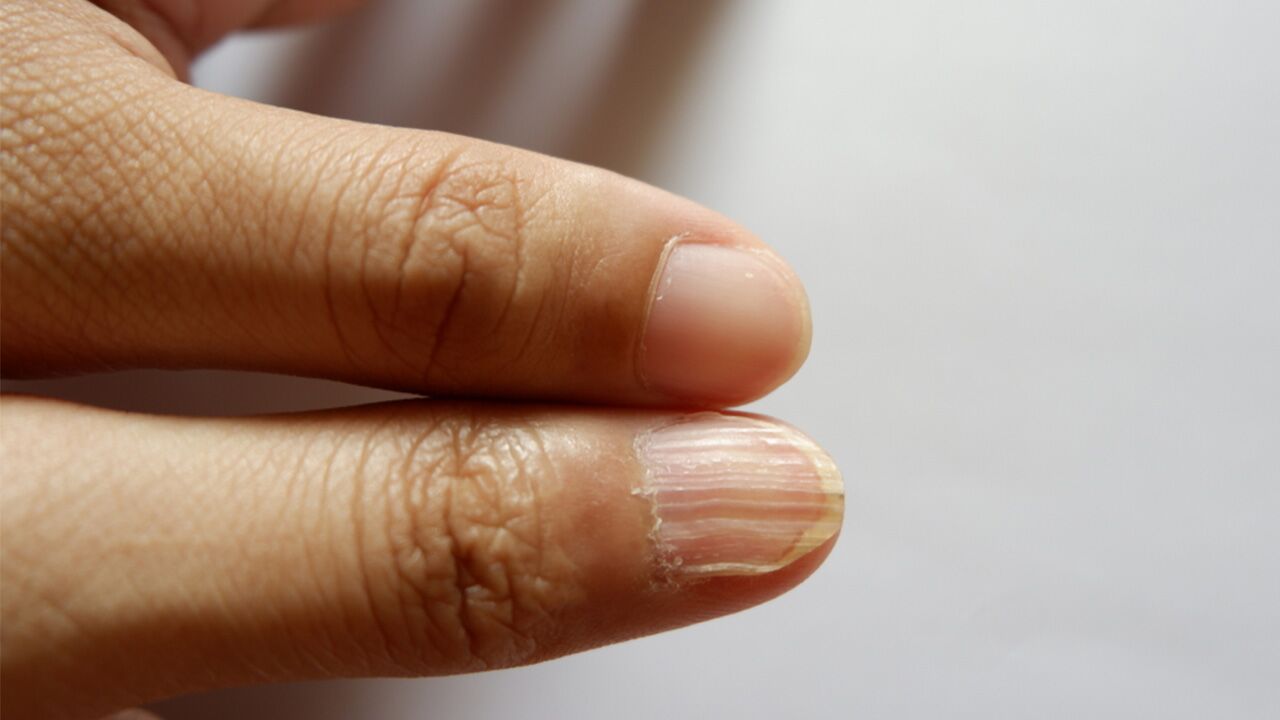Everything You Need to Know About Iron Deficiency Anemia
 By: by Amino Science
By: by Amino Science

Iron deficiency anemia is a common type of anemia that occurs when the body doesn’t have enough iron, the mineral essential for the production of hemoglobin. Without sufficient levels of hemoglobin, red blood cells become less able to carry oxygen throughout the body. While the effects of iron deficiency anemia may initially seem subtle, if iron levels fall far enough, symptoms will begin to intensify, and the condition may eventually lead to health problems.
Symptoms of Iron Deficiency Anemia
Symptoms of iron deficiency anemia can be so mild at first that they go unnoticed. However, as the body’s iron stores become further depleted, symptoms will become more apparent and may include:
| Fatigue | Cold hands and feet |
| Weakness | Shortness of breath |
| Headache | Tongue soreness |
| Pale skin | Fast heartbeat |
| Hair loss | Whooshing sound in the ears |
What Causes Iron Deficiency Anemia?
Iron deficiency anemia can be caused by a number of factors. Some of the most common include:
- Heavy periods
- Pregnancy
- Blood loss
- Iron-deficient diet
- Inability to absorb iron
Heavy Periods
One of the most common causes of low iron levels in women is heavy menstrual periods. According to the Centers for Disease Control and Prevention (CDC), typical menstrual bleeding lasts for 4 to 5 days. However, women with excessive menstrual bleeding tend to bleed for more than 7 days and lose twice as much blood.
Heavy menstrual bleeding can be caused by a number of conditions, including hormone imbalances and uterine polyps or fibroids.
Pregnancy
Pregnant women have a higher risk of developing iron deficiency anemia because they require extra iron stores to support both themselves and their growing fetus.
Blood Loss
Certain factors can cause gastrointestinal bleeding and lead to iron deficiency anemia. Some of these include:
- Stomach ulcers
- Colon polyps
- Colon cancer
- Ulcerative colitis
- Crohn’s disease
- Regular use of certain pain relievers, including aspirin
People who donate blood regularly may also be at risk of developing iron deficiency anemia.
Iron-Deficient Diet
People whose diets are deficient in iron, especially vegetarians and vegans, are at risk of developing iron deficiency anemia.
Inability to Absorb Iron
Certain disorders of the gastrointestinal tract, such as celiac disease, affect the intestines’ ability to absorb nutrients from food and can cause iron deficiency anemia. Inflammatory bowel diseases such as ulcerative colitis and Crohn’s disease also cause impaired iron absorption due to inflammation of the digestive tract.

Groups Most at Risk of Iron Deficiency Anemia
As already alluded to, certain groups are more at risk of developing iron deficiency anemia than others. These groups include:
- Women who are menstruating, pregnant, or breastfeeding
- Vegetarians and vegans
- Premature or low birth weight infants who don’t get enough iron from breast milk or formula
- Children who drink more than 16 to 24 ounces of cow’s milk a day
- People who’ve recently experienced major surgery or trauma
- People who’ve had gastric bypass
- People with celiac disease
- People with inflammatory bowel diseases, such as ulcerative colitis and Crohn’s disease
Diagnosing Iron Deficiency Anemia
The first step in diagnosing iron deficiency anemia is performing blood tests, including a complete blood count, or CBC. A CBC is a test that measures the number and certain physical characteristics of three types of cells that circulate in the blood:
- White blood cells (WBCs)
- Red blood cells (RBCs)
- Platelets
Additional blood tests that measure serum ferritin, iron, total iron-binding capacity (TIBC), and transferrin may also be ordered. The normal ranges of each will vary depending on the laboratory performing the test. In general, though, people with iron deficiency anemia will tend to show the following results.
- Low hemoglobin and hematocrit: Normal hemoglobin (the protein in RBCs that carries oxygen) levels should be between 12.0 and 15.5 grams per deciliter in women and 13.5 and 17.5 grams per deciliter in men. Normal hematocrit (the proportion of RBCs to blood plasma) levels should be between 35.5% and 44.9% in women and 38.3% and 48.6% in men.
- Low mean cellular volume (MCV): Normal MCV (the average volume of an RBC) levels should be between 82 and 98 femtoliters in both women and men.
- Low ferritin: Normal ferritin (the blood cell protein that stores iron) levels should be between 10 and 120 nanograms per milliliter in women 18 to 39 years of age and 12 and 263 nanograms per milliliter in women 40 and older. In men, the levels should be between 20 and 250 nanograms per milliliter.
- Low serum iron: Normal serum iron (the level of iron in the blood) levels should be between 50 and 170 micrograms per deciliter in women and 65 and 176 micrograms per deciliter in men.
- High TIBC or transferrin: Normal TIBC (the blood’s capacity to bind iron with transferrin) levels should be between 240 and 450 micrograms per deciliter in both women and men. Normal transferrin (the main protein that transports iron throughout the body) levels should be between 170 and 370 milligrams per deciliter in both women and men.
If your health care provider feels your iron deficiency anemia may be due to blood loss, additional tests and procedures may be performed as well. These include:
- Fecal occult blood
- Endoscopy
- Colonoscopy
- Pelvic ultrasound
Treating (and Preventing) Iron Deficiency Anemia

Once iron deficiency anemia has been confirmed, treatment may consist of iron supplements, correction of underlying blood loss, dietary changes, or a combination of all three.

Iron Supplements
Over-the-counter iron supplements can help replenish iron stores in the body. However, it’s possible to get too much iron, so your health care provider will determine the amount right for you. Interestingly, though, some forms of iron are more toxic than others.
For example, while the toxic potential of ferrous sulfate—the most commonly used form of iron—is well known, iron that’s been chelated, or bonded, to amino acids has been shown in studies to be safe at even extremely high doses. In fact, the process of chelation not only leads to improved absorption of iron and fewer gastrointestinal side effects but also allows your body to absorb only what it needs.
Correction of Underlying Blood Loss
If your iron deficiency anemia is found to be the result of underlying blood loss, iron supplementation alone most likely won’t be enough. Depending on the cause, additional treatment may involve oral contraceptives to lighten heavy menstrual flow, medications to treat peptic ulcer disease, or surgery to remove a bleeding polyp, tumor, or fibroid. If iron deficiency is severe, blood transfusions or intravenous iron may also be needed.
Iron-Rich Foods
Regardless of the treatment recommended for iron deficiency anemia, one of the best ways to both support your iron stores and prevent recurrence of anemia is to eat a diet that includes plenty of iron-rich foods.
It should also be noted that the body absorbs iron from meat better than it does iron from plant sources, so vegetarians and vegans may need to increase their intake of iron-rich, plant-based foods to get the same amount of iron as meat eaters. Some of the best plant-based sources of iron are:
- Green leafy vegetables
- Fortified cereals, breads, and pasta
- Dark chocolate
- Dried fruits
- Legumes
Vitamin C also helps the body absorb iron, so drinking juices high in vitamin C can further aid in increasing iron stores. Citrus juices such as grapefruit and orange juice are certainly great sources of vitamin C, but many foods you might not otherwise suspect are rich sources as well. These include:
- Broccoli
- Spinach
- Kale
- Strawberries
- Melons
- Kiwi fruit
- Peppers
- Tomatoes
Supplementing with Essential Amino Acids
Low albumin levels and anemia are two common conditions that slow recovery and impact quality of life in elderly patients with hip fractures. Taking essential amino acids has been shown to help bring albumin levels back to normal and reverse anemia in hip fracture patients, thereby improving overall recovery outcomes and increasing the likelihood that patients can reclaim their independence. This same benefit is likely to extend to all individuals with iron deficiency anemia.
Left untreated, severe iron deficiency anemia may lead to complications, including irregular heartbeat, heart failure, premature births, and delayed growth and development in children. Therefore, it’s important to be aware of the signs and symptoms of iron deficiency and to take steps to prevent its progression.

Up to 25% off Amino
Shop NowTAGS: conditions
Join the Community
Comments (0)
Most Craveable Recipes




 833-264-6620
833-264-6620




















